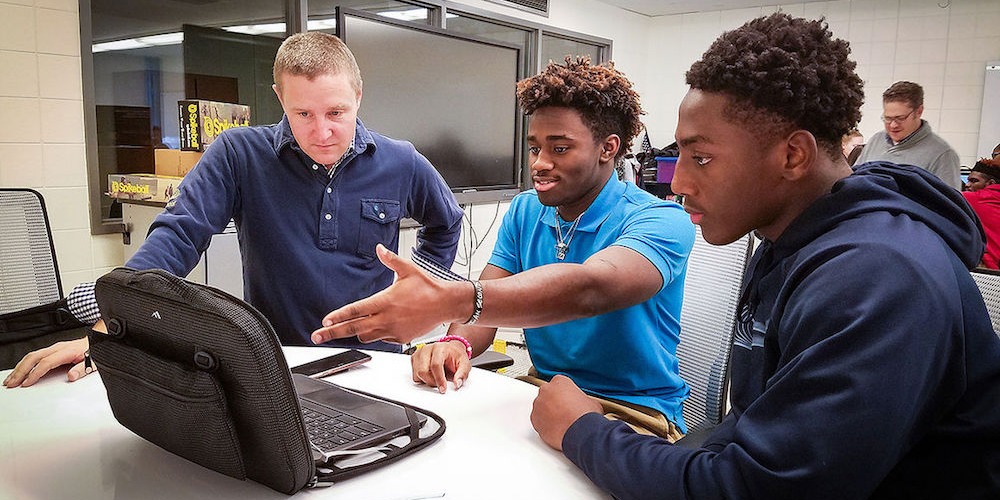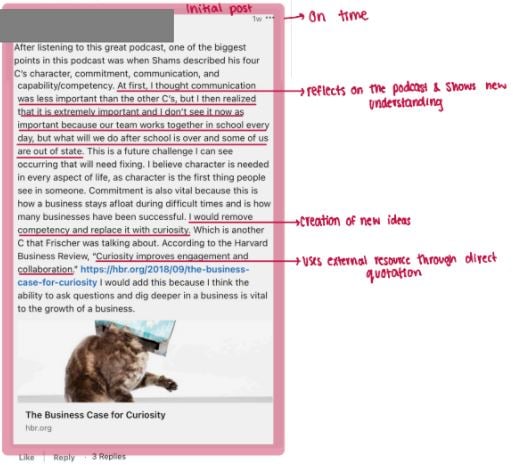 The Power of 'Why'
The Power of 'Why'
This morning, I spoke to an INCubatoredu student team in Pennsylvania to help them uncover the heart of their problem. I asked them ‘why’ a lot...Why is that important? Why does that matter? Why is that a problem? I felt like I was channeling my young children, who ask 'why' a lot. A LOT.
Writing this during a season where magic feels a bit more tangible, I love the  idea of embracing childhood curiosity. And this childhood curiosity is exactly what we ask our high school students to embrace year round in our high school entrepreneurship program. We ask them to work through a ‘Five Whys’ assignment (which stems from six sigma processes) in the INCubatoredu curriculum. Why you ask (see what I did there?)? We want the students to get to the root of a problem. Solutions will come if you have the right problem.
idea of embracing childhood curiosity. And this childhood curiosity is exactly what we ask our high school students to embrace year round in our high school entrepreneurship program. We ask them to work through a ‘Five Whys’ assignment (which stems from six sigma processes) in the INCubatoredu curriculum. Why you ask (see what I did there?)? We want the students to get to the root of a problem. Solutions will come if you have the right problem.
Social Media Friend or Foe
Like these students, I had a nagging problem: Why is social media sometimes seen as a roadblock to education and student development rather than an accelerator? Social media is powerful and is omnipresent in students' personal lives. In INCubatoredu, it's also a way to get consumer feedback and gain traction for early-stage business models—a super valuable tool. But as adults and educators, we see social media as a distraction to learning and productivity. So, which is it?

I teamed up with two of our INCubatoredu Master teachers, Hagop Soulakian ('Hags') and Brad Neubauer. Asking ourselves ‘why’ more times than I want to count and supporting it with research and quantitative data, we discovered one root cause could be that students may not understand the value of social media beyond funny memes and connections with friends. Additionally, they may not know how to properly use social media to capitalize on this value.
But students are not entirely to blame for this: they don’t know what they don’t know. Even though today’s students have only known a world with technology, they cannot be assumed intrinsic experts on the value social media can offer.
The proficiency of social media is beyond using the tool itself, it is understanding the purpose and audience and how to use the tool advantageously.
~Michelle Kusel, Uncharted Learning
Moving to Solution
As one of many possible solutions to this problem, we took to the National ACTE Conference in New Orleans, Louisiana, to share and encourage our session attendees to 'Tear Down Their (Fire)walls and Embrace Social Media in Their Classrooms'.
“It’s tough because sometimes social media is grouped together; however, every platform offers different benefits (and drawbacks). For students, LinkedIn is a great platform to create a professional digital footprint.”
- Brad Neubauer, Teacher
Being on vs. Being Invested in Social Media
Being invested in social media means one is intentional about activity, and in this case operating and posting in a way that supports the development of a professional digital footprint. This can help advance career goals. Building professional social media skills via LinkedIn can help students:- Prepare for life beyond high school
- Build skills around online interactions, networking, and conversations
- Develop communication and critical thinking skills
Hags agrees and adds that LinkedIn provides a public space for professional reflection.
”It has been great! There are times people outside the class, like subject-matter experts, enter the discussion with us!”
~ Hagop Soulakian, Teacher

But they emphasized the importance of teaching the appropriate and safe ways to use LinkedIn. We learned through the research that being on and being invested in social media are different. A student can be on LinkedIn with a profile but they need to be taught how to use the tool if they are going to transcend and grow from the experience.
Online experiences require meaning-making, just as in-person experiences do. Arguably making meaning is the top line of a teacher's job description. For example, the difference between engagement versus critical engagement.
For Teachers: Three Ways to Embrace Linked In in the Classroom:
1. Student-led online discussion regarding student-chosen business topics.
Example: a teacher prompt is followed by...
student responses:
2. Student reflection as a journal to demonstrate progress.
Example: a reflection and teacher feedback

3. Student promotion as a tool to promote themselves, their business, and their interests.
Example: a student promotes a milestone

Evolving with the Channel
Students have embraced LinkedIn in Brad and Hag’s classes, to the point that Hags has iterated on his original lesson by creating student moderators of the LinkedIn discussions. Students are responsible for guiding the discussion, analyzing responses, and grading (with teacher oversight). This role is seen as a privilege in class and one students are excited for.
Let’s be honest, no one likes to be told what not to do. Let’s embrace showing students what to do to build a digital footprint they will be proud of.
